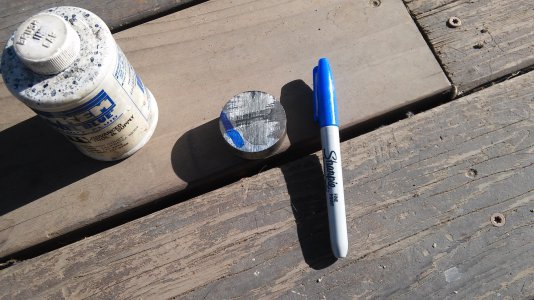Hi Eric.
One of the things I feel a bit unsettled about is how long my 236mL (8 fl oz) plastic bottle of Dykem will last if left to itself. I would be using it up very slowly. I have heard that Dykem deteriorates if you don't use it up, but I don't know how true that is. So what you say is from direct experience, for which I thank you. Perhaps other HM long-term users can let us know whether Dykem can have years of shelf life.
Hi Graham. I will attach a picture of a blotch of my tired blue Dykem next to blue sharpie. The blue grey faded smear near the middle of the disk is the Dykem. The bottle is also in the picture. Note that I have a bottle of steel red Dykem that is brilliant. Also, this blue is still usable, but it is getting hard to see.


